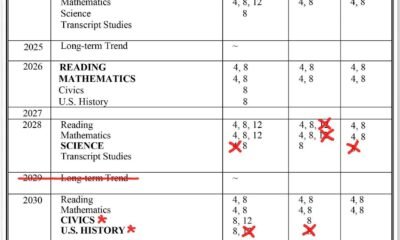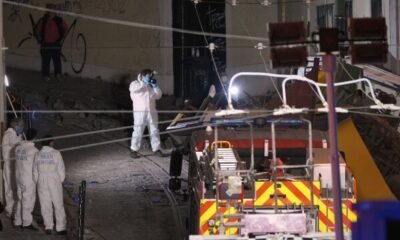Top Stories
Trump says strike on Venezuelan gang will lead cartels to think twice
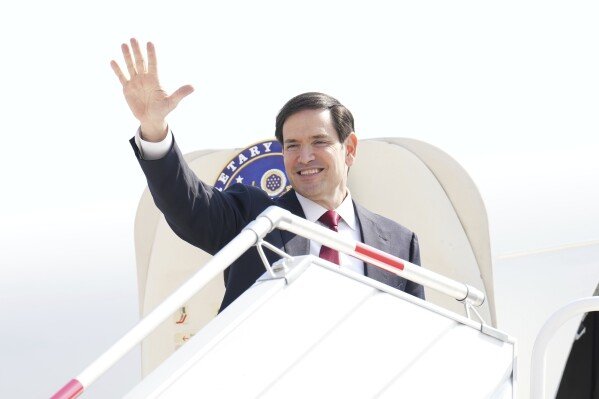
WASHINGTON (AP) — President Donald Trump on Wednesday justified the lethal military strike that his administration said was carried out a day earlier against a Venezuelan gang as a necessary effort by the United States to send an unmistakable message to Latin American cartels.
Asked why the military did not instead interdict the vessel and capture those on board, Trump said the operation would cause drug smugglers to think twice about trying to move drugs into the U.S.
“There was massive amounts of drugs coming into our country to kill a lot of people, and everybody fully understands that,” Trump said while hosting Polish President Karol Nawrocki at the White House. He added, “Obviously, they won’t be doing it again. And I think a lot of other people won’t be doing it again. When they watch that tape, they’re going to say, ‘Let’s not do this.’”
Tuesday’s strike was an astonishing departure from typical U.S. drug interdiction efforts at a time when Trump has ordered a major Navy buildup in the waters near Venezuela.
Later Wednesday, Secretary of State Marco Rubio warned that such operations “will happen again.”
Rubio said previous U.S. interdiction efforts in Latin America have not worked in stemming the flow of illicit drugs into the United States and beyond.
“What will stop them is when you blow them up, when you get rid of them,” Rubio said on a visit to Mexico.
Defense Secretary Pete Hegseth said on “Fox & Friends” that Venezuelan President Nicolás Maduro was running his country “as a kingpin of a drug narco-state.”
Hegseth said officials “knew exactly who was in that boat” and “exactly what they were doing.” But the Republican administration has not presented any evidence supporting Trump’s claim that operators of the vessel were from the Venezuelan gang Tren de Aragua and were trying to smuggle in drugs.
“President Trump is willing to go on offense in ways that others have not seen,” said Hegseth, who declined to detail how the strike was carried out.
Venezuela’s government, which has long minimized the presence of Tren de Aragua in the South American country, limited its reaction to the strike to questioning the veracity of a video publicized by the Trump administration showing the attack. Communications Minister Freddy Ñáñez suggested it was created using artificial intelligence and described it as an “almost cartoonish animation, rather than a realistic depiction of an explosion.”
Hegseth responded that the strike “was definitely not artificial intelligence,” adding he watched live footage from Washington as the strike was carried out.
Trump and administration officials have repeatedly blamed the gang for being at the root of the violence and illicit drug dealing that plague some American cities.
The president on Tuesday repeated his claim — contradicted by a declassified U.S. intelligence assessment — that Tren de Aragua is operating under Maduro’s control.
In announcing the strike, Trump said the operation, which he said killed 11, was carried out in international waters. He also noted that the gang is designated by the U.S. government as a foreign terrorist organization.
Unlike its counterparts from Colombia, Brazil and Central America, Tren de Aragua has no large-scale involvement in smuggling cocaine across international borders, according to InSight Crime, which last month published a 64-page report on the gang based on two years of research.
“We’ve found no direct participation of TdA in the transnational drug trade, although there are cases of them acting as subcontractors for other drug trafficking organizations,” said Jeremy McDermott, a Colombia-based co-founder of InSight Crime, referring to the Venezuelan gang by its initials.
Still, with affiliated cells spread across Latin America, it would not be a huge leap for Tren de Aragua to one day delve deeper into the drug trade, he said. Meanwhile, the rhetoric from officials in Washington who would blame TdA as a proxy for all Venezuelan drug traffickers assures it will remain a target of intense U.S. government focus.
“It is almost impossible today to determine who is TdA and who is not,” said McDermott. “Deportations and statements from the United States suggest that TdA is now being used as a catch-all description for Venezuelan criminals acting abroad.”
Some international warfare experts are questioning the legality of the strike.
“Intentional killing outside armed conflict hostilities is unlawful unless it is to save a life immediately,” said Mary Ellen O’Connell, an expert on international law and the use of force at the University of Notre Dame Law School. “No hostilities were occurring in the Caribbean.”
Hegseth was opaque in his comments on Fox about whether Trump was looking to press for “regime change” in Venezuela.
“Well, that’s a presidential decision,” Hegseth said. He added that “anyone would prefer that” Maduro “would just give himself up. But that’s a presidential-level decision.”
The U.S. announced plans last month to boost its maritime force in the waters off Venezuela to combat threats from Latin American drug cartels.
Maduro’s government has responded by deploying troops along Venezuela’s coast and border with neighboring Colombia, as well as by urging Venezuelans to enlist in a civilian militia.
Ryan Berg, director of the Americas program at the Washington-based Center for Strategic and International Studies, said Tuesday’s strike clearly shows governments in the region, not only Maduro, the paradigm shift brought on by the U.S. decision to declare Tren de Aragua and Mexican cartels as foreign terrorist organizations.
“This is a United States that sees security differently,” Berg said. “They’ve just demonstrated the ability to use deadly force in the Western Hemisphere, and they’ve already told Mexico that they’re going to do the same thing on Mexican territory if they don’t get the level of cooperation that they want.”
The U.S. has a complicated legacy of sticking its hand in Latin American affairs, and American military interventions — particularly during the Cold War — played a major part in destabilizing governments and paving the way for coups in Guatemala, Chile and a number of Central American nations, which still grapple with the sometimes violent fallout.
In recent years, the U.S. has taken a a more subtle approach, providing foreign assistance to many countries and security forces, but not making direct strikes like what was seen in Caribbean waters.
Mexican Secretary of Foreign Relations Juan Ramón de la Fuente, who met with Rubio on Wednesday, underscored the importance of the Trump administration to operate in the region “without subordination” of other governments and “respecting sovereignty” of allies.
—
Lee reported from Mexico City. AP writer Regina Garcia Cano and Megan Janetsky in Mexico City and Joshua Goodman in Miami contributed reporting.
Top Stories
Donald Trump is having a lovechild with Satan: South Park sets up future chaos | South Park

So far, South Park’s 27th season has had one clear goal: to provoke Donald Trump into a tantrum. Every episode has managed to pick on a new and different facet of his authoritarian rule – the silencing of his media critics, his use of Ice agents as an intimidation tactic – while simultaneously telling everyone what a tiny penis he has.
So the anticipation levels were off the charts for this week’s episode, entitled Wok Is Dead, which promised to take on Trump’s tariff policy. And in fairness it did do this, but only in a couple of scenes where a Chinese character with an uncomfortably Mickey Rooney-esque accent complained about them. The rest of the episode just settled for a bunch of jokes about Labubu dolls, as well as calling Donald Trump “Satan” as many times as it feasibly could.
For the most part, Wok Is Dead found itself split in two. The bulk of the episode was taken up with a very traditional South Park storyline about a cultural fad pushed to extremes. Everyone at South Park Elementary has become obsessed with Labubu dolls, a line of vaguely creepy collectible plush dolls sold in mystery boxes. In real life, the Labubu craze has been ramped up to the level of fidget spinners and loom bands before them, prompting the market to be flooded with a rush of carelessly manufactured fakes that potentially pose a danger to children.
In the world of South Park, however, the dolls prompt satanic rituals, with children sacrificing poultry and summoning plagues in their desire to find ever-rarer dolls, much to the dismay of Jesus, who is serving as the school counsellor. And that’s about it for that particular storyline. It’s South Park by numbers: find something newly popular, mock it for 20 minutes, and then go home.
But that isn’t why people have been watching South Park in record numbers this year. No, they’re doing that because of how nakedly aggressive the show has been towards Trump. And this week it chose to achieve this by having as many characters as possible repeat the line: “Donald Trump is fucking Satan.”
This is for two reasons. First, throughout the season it has been evident that the cartoon Donald Trump has literally been having sexual intercourse with the devil, who makes a reappearance after his dalliance with Saddam Hussein in the South Park movie. Second, maybe the writers just wanted to call Trump “Satan” a bunch of times.
In essence, this was South Park pulling the same trick it did with its controversial 2005 episode Trapped in the Closet, in which Tom Cruise locked himself inside a cupboard while everyone around him repeatedly stated: “Tom Cruise won’t come out of the closet.” On one hand, Tom Cruise was literally inside a closet. On the other, it was winking at unproven rumours about his sexuality.
However, Trapped in the Closet had a grander aim, which was to describe the opaque beliefs of Scientologists. And it worked. Not only was it one of the best episodes of South Park ever made, but it changed the way the world talks about Scientology.
Meanwhile, the aim of Wok Is Dead (aside from showing its disdain for Labubu dolls) seems to be to call Donald Trump Satan. Which, compared with the anger and specificity of the episodes preceding it, feels a little lazy. From everything we know about Trump, it feels like the jabs that land the hardest are the ones that undermine his ego, which is why he expends so much effort responding to claims about the size of his hands. Meanwhile, comparing him to Satan – the all-powerful embodiment of evil – feels as if it might actually be taken as a compliment.
Still, the payoff to everybody saying “Donald Trump is fucking Satan” so often is that Satan is now pregnant with Donald Trump’s butt baby, which is bound to play out in future episodes somehow.
If you’re a fan of South Park, then Wok Is Dead’s scattershot cultural satire will have more than passed muster. But for those of us who have been tuning in to watch Trey Parker and Matt Stone take down Trump, it represents the first disappointment of the season. Perhaps it’s a blip, but this week’s episode suggests that Parker and Stone are starting to run low on ammunition, and want to broaden their horizons away from Trump in future episodes.
Still, if that’s the case, the outcome would be a regular South Park season, and there are many worse things than that.
Top Stories
5 new Apple products we won’t see at the Apple Event 2025
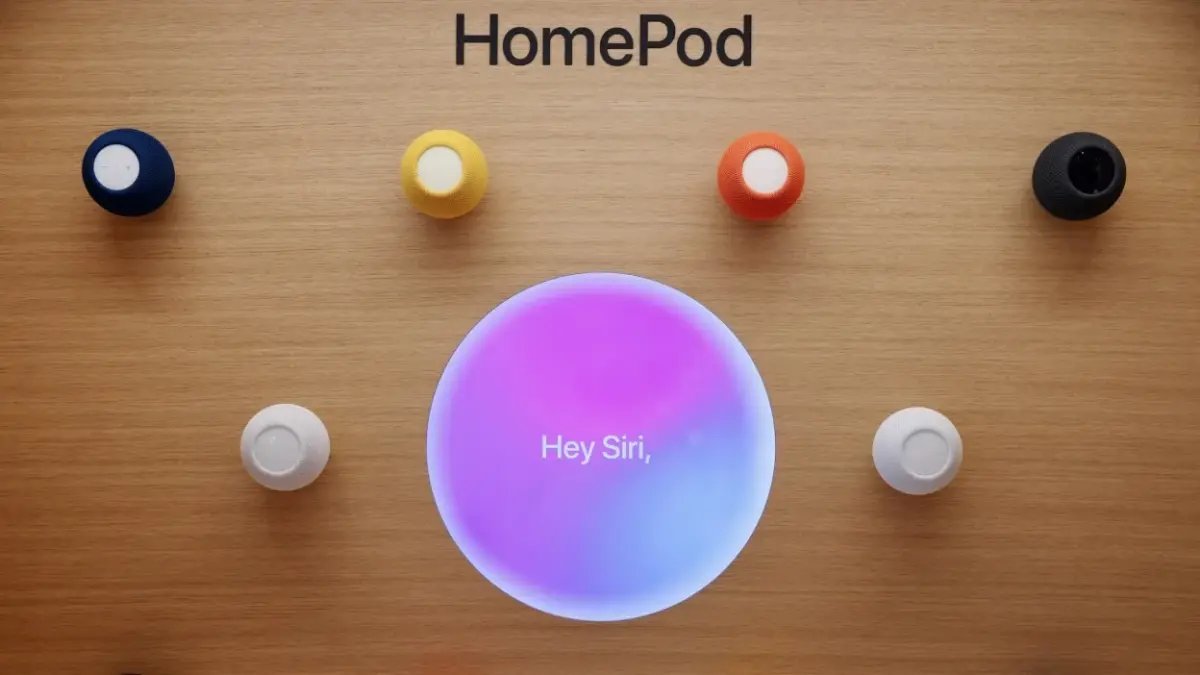
Apple fans only have a few more days to wait for the Apple Event 2025, aka the official launch of the iPhone 17, which is slated for Sept. 9. Typically, Apple also uses this event to launch other products as well. For instance, last year’s event featured the iPhone 16, the Apple Watch Series 10, AirPods 4, and more. That will likely remain true this year as well, but not everything in Apple’s rumored pipeline is set to make its debut next week.
Before we get started, let’s recap the stuff we expect to see at Apple’s release event this year. That includes the iPhone 17, the Apple Watch Series 11, the Apple Watch Ultra 3, the ultra-thin iPhone 17 Air, and likely the AirPods Pro 3. For these Apple September launch events, the company typically sticks to the iPhone, AirPods, and Apple Watch, but there are a few other products expected in 2025 that could sneak their way into the event.
However, there are even more new Apple products we’re not expecting to see at the event, either because Apple will have a separate event for them later in 2025 or because they won’t be available until 2026.
The next iPhone ‘e’ model
Apple replaced the iPhone SE with the iPhone ‘e’ model phones starting with the iPhone 16e. While it is nice to see Apple treating its affordable iPhone with the same deference as the main models, we don’t think Apple will launch the next ‘e’ iPhone alongside the iPhone 17. There are several reasons for this, but in short, the next affordable iPhone will almost certainly be in absentia come Sept. 9.
The main reason for this is that Apple typically saves those releases for spring, and this dates back to the iPhone SE models. Apple’s first SE model was launched in March 2016, and the second and third generations were launched in April 2020 and March 2022, respectively. Apple continued this trend with the iPhone 16e, which was launched in February 2025. It seems likely that an iPhone 17e is coming next year, per Mark Gurman of Bloomberg.
This Tweet is currently unavailable. It might be loading or has been removed.
New Mac products
Apple is reportedly working on several new Mac products, including an M4 Mac Pro and, of course, Mac computers with the upcoming M5 chip that Apple is no doubt working on. Generally speaking, Apple saves its Mac announcements for a separate event that usually takes place in either October or May, depending on the product and the launch. So, if you need a new MacBook laptop, you still have some time to wait.
Those announcements may even have to wait until 2026. The upcoming MacBook Pro with an M5 chip is rumored to be delayed until 2026, along with several other products. Thus, in short, we won’t see any new Mac products at the iPhone launch next week, and we may not see some of them until 2026 at all. The M4 Mac Pro might still come out before the end of 2026, though.
Mashable Light Speed
New iPads
Much like the Mac products, Apple generally saves new iPad announcements for other events, usually alongside the Mac products. In the recent past, Apple has saved iPad announcements for springtime, and we have no reason to believe Apple will stray from tradition and announce any early with the iPhone 17.
Per Gurman, Apple is definitely saving its iPad announcements for early 2026. The products may include a new low-end iPad, new iPads with M4 chips, and the aforementioned iPhone 17e as part of a “flurry of new products” landing in the first half of next year. In any case, don’t expect any iPads at the September Apple Event 2025.
New AirPods Max
The AirPods Pro 3 are on the docket for an announcement (we think), but the AirPods Max aren’t. The first generation is already pretty old, at around five years, and it seems the next generation of the AirPods Max is still pretty far out. Apple is keeping the next generation under wraps until 2027, per MacRumors, which is very, very far away from next week.
The update will be a welcome one. Rumor suggests that the next generation will be lighter, introduce new technology like heart rate monitoring, and updated internals. Apple did refresh the AirPods Max last year, but the refresh only added new color options and a USB-C port, so they’re still widely considered a first-generation product.
Any HomePod products
Apple has a couple of these in the works, including a HomePad smart home hub and the HomePod mini 2. It’s improbable that we’ll see either at the September Apple event, although not impossible. Apple is expected to release the HomePod mini and a new Apple TV 4K device by the end of 2025, and they’re small enough products that they may sneak into the iPhone event. However, it’s more likely that Apple will announce these at a separate event along with the new Macs.
The HomePod smart home hub may have to wait even longer for a launch date. Reports claim that Apple has delayed its Google Nest Hub competitor until 2026. Initially, the launch was pushed back to the end of 2025, but more recent reports indicate that Apple wants to wait until 2026 to better prepare Apple Intelligence. So, it’s unlikely that we’ll see any HomePod products on September 9.
The next Apple Vision Pro
Rumors about the Apple Vision Pro have been ramping up in recent months as Apple aims to release a refreshed model of the Vision Pro before the end of 2025. This refresh will include the M5 chip and improved comfort. That coincides with the upcoming VisionOS 26 update, which should be released in autumn 2025. Apple is reportedly also working on the Vision Air, but we don’t think that’s coming until 2027 at the earliest.
It is highly unlikely that this piece of tech will launch with the iPhone lineup. Since the refresh is coming with an M5 chip, it’s much more likely that it’ll launch with the rest of the M5 products that Apple has coming down the pipeline. Since those aren’t launching with the iPhone, we’ll likely see the refreshed Vision Pro later in 2025.
Still, if we’re lucky, Apple may tease some of these products next week.
The launch event is mostly about the mobile stuff
Apple usually keeps its products grouped up, and as we said earlier, the iPhone event usually only includes the iPhone, Apple Watch, and AirPods products (and this year, probably the AirTag 2). So, if it’s not in the mobile product category, chances are that you won’t see it launch next week.
Top Stories
Portugal holds day of mourning after Lisbon funicular accident kills 17 | Transport News
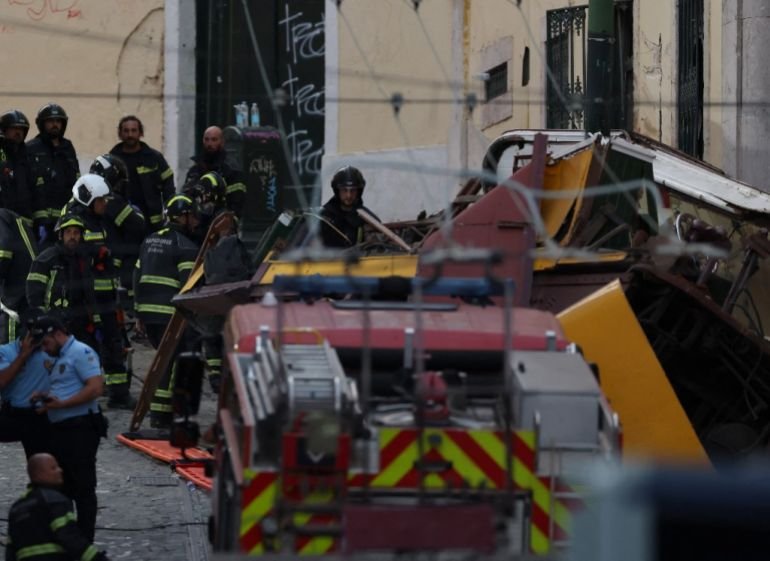
Crash of the historic Elevador da Gloria funicular is one of Lisbon’s deadliest transport accidents in years.
Published On 3 Sep 2025
|
Updated: an hour ago
Portugal is holding a day of mourning after at least 17 people were killed when Lisbon’s Elevador da Gloria funicular derailed and crashed.
The Portuguese government said the country would observe a day of mourning on Thursday to commemorate the victims, all of whom have been recovered from the wreckage, according to the emergency services.
The tram, one of Lisbon’s major tourist attractions, came off the rails and hit a building late on Wednesday afternoon. Authorities on Thursday raised the death toll to 17 people, with a further 21 injured.
Officials have not released the victims’ identities or nationalities but initially said some of the deceased were foreign nationals. On Thursday, they reported that at least 11 of the injured were foreign.
The Portuguese government quickly announced the day of national mourning. Officials in Lisbon have declared three days of mourning in the capital city.
“It’s a tragic day for our city … Lisbon is in mourning. It is a tragic, tragic incident,” Mayor Carlos Moedas told reporters at the scene.
President Marcelo Rebelo de Sousa expressed condolences over the “tragedy”.
Investigation
Footage from the crash site showed the yellow carriage lying mangled against a building as firefighters pulled passengers from the wreckage. Emergency crews worked into the night to clear debris from the steep hillside railway.
The president has directed the concerned authorities to swiftly determine the cause of the accident.
“The public prosecutor’s office will open an investigation,” the attorney general’s office said in a statement, according to national news agency Lusa.
It added that the public prosecutor’s office “is carrying out the necessary procedures, within the scope of its powers, particularly for the purpose of preserving evidence, with guidance and in coordination with police agencies”.
The police, national transport safety authority and Carris, the company that runs the Gloria funicular, are also investigating the cause of the accident, according to reports.
Lisbon’s fire department said a loose cable caused the funicular to lose control and slam into a building. The accident took place just after 6pm (17:00 GMT) during rush hour, according to local media.
Images circulating online showed one car flipped beside the rails and surrounded by debris while passengers scrambled to safety. Video footage aired by CNN Portugal captured another car jolting violently on the track with panicked passengers leaping from windows.
The Elevador da Gloria, which first opened in 1885, links the Baixa district with the Bairro Alto neighbourhood, offering sweeping views of the city. Operated by Lisbon’s public transport company Carris, it is one of three historic funicular lines and serves both residents and tourists.
The funicular operates on a counterweight system with two cars connected by a cable and powered by electric motors. While the lower car appeared largely intact, the upper carriage sustained significant damage.
Lisbon has seen a surge in tourism in recent years, and summer draws large numbers of visitors to its narrow streets and historic districts. The Elevador da Gloria is among the city’s best-known attractions, and Wednesday’s crash is one of Portugal’s deadliest transport accidents in recent memory.

-

 Business6 days ago
Business6 days agoThe Guardian view on Trump and the Fed: independence is no substitute for accountability | Editorial
-
Tools & Platforms3 weeks ago
Building Trust in Military AI Starts with Opening the Black Box – War on the Rocks
-

 Ethics & Policy1 month ago
Ethics & Policy1 month agoSDAIA Supports Saudi Arabia’s Leadership in Shaping Global AI Ethics, Policy, and Research – وكالة الأنباء السعودية
-

 Events & Conferences4 months ago
Events & Conferences4 months agoJourney to 1000 models: Scaling Instagram’s recommendation system
-

 Jobs & Careers2 months ago
Jobs & Careers2 months agoMumbai-based Perplexity Alternative Has 60k+ Users Without Funding
-

 Education2 months ago
Education2 months agoVEX Robotics launches AI-powered classroom robotics system
-

 Funding & Business2 months ago
Funding & Business2 months agoKayak and Expedia race to build AI travel agents that turn social posts into itineraries
-

 Podcasts & Talks2 months ago
Podcasts & Talks2 months agoHappy 4th of July! 🎆 Made with Veo 3 in Gemini
-

 Podcasts & Talks2 months ago
Podcasts & Talks2 months agoOpenAI 🤝 @teamganassi
-

 Education2 months ago
Education2 months agoMacron says UK and France have duty to tackle illegal migration ‘with humanity, solidarity and firmness’ – UK politics live | Politics






